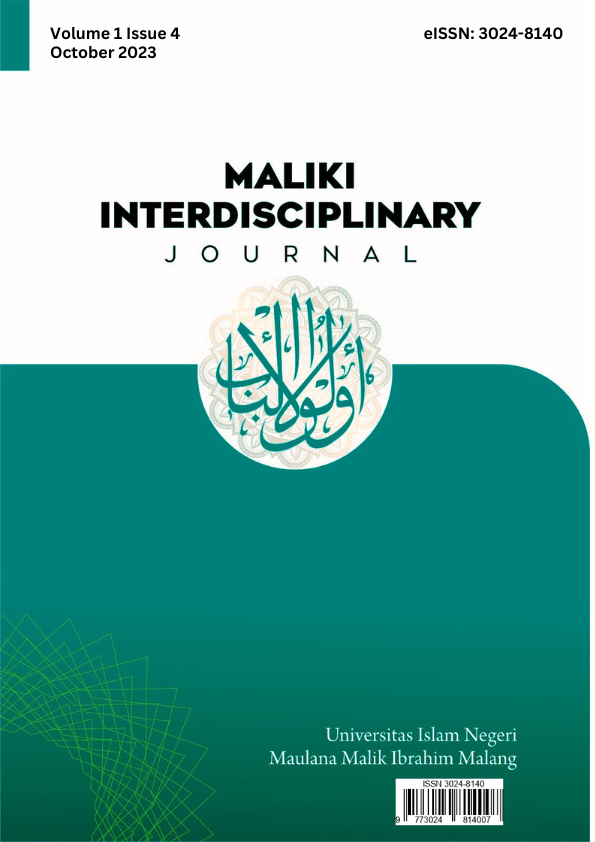Analisis perbandingan rencana strategis tahun 2022 pada perbankan syariah di Indonesia
Abstract
Strategic Plans are very important to provide long-term guidance to bank management and employees in achieving the company's vision and mission, as well as identifying strategies that will be used to achieve goals. This research aims to find out the comparison of the 2022 Strategic Plans at Bank Muamalat Indonesia (BMI), Bank Central Asia Syariah (BCAS), and Bank Syariah Indonesia (BSI). This type of research is a qualitative approach with descriptive methodology, utilizing data collection techniques such as interviews, observation and text analysis which are considered capable of explaining in detail, clearly and specifically. Based on the results of the analysis that has been carried out, the results obtained are that Bank Muamalat Indonesia (BMI), Bank Central Asia Syariah (BCAS), and Bank Syariah Indonesia (BSI) have the same strategic planning indicators, but the focus in their strategic planning is different. This research provides an understanding of the comparison of the 2022 Strategic Plan between Bank Muamalat Indonesia (BMI), Bank Central Asia Syariah (BCAS), and Bank Syariah Indonesia (BSI).
Strategic Plans are very important to provide long-term guidance to bank management and employees in achieving the company's vision and mission, as well as identifying strategies that will be used to achieve goals. This research aims to find out the comparison of the 2022 Strategic Plans at Bank Muamalat Indonesia (BMI), Bank Central Asia Syariah (BCAS), and Bank Syariah Indonesia (BSI). This type of research is a qualitative approach with descriptive methodology, utilizing data collection techniques such as interviews, observation and text analysis which are considered capable of explaining in detail, clearly and specifically. Based on the results of the analysis that has been carried out, the results obtained are that Bank Muamalat Indonesia (BMI), Bank Central Asia Syariah (BCAS), and Bank Syariah Indonesia (BSI) have the same strategic planning indicators, but the focus in their strategic planning is different. This research provides an understanding of the comparison of the 2022 Strategic Plan between Bank Muamalat Indonesia (BMI), Bank Central Asia Syariah (BCAS), and Bank Syariah Indonesia (BSI).
Downloads
References
Faisol, A., Tanggapan, A., Pelanggan, K., Rb, R., Hendrawaty, E., Network, P., Kematangan, D. A. N., & Komalasari, A. (2007). Bisnis & manajemen. 3(2).
Fauziah, N. W., & Segaf, S. (2022). Seberapa Pengaruh Penetapan Nisbah Bagi Hasil, Inflasi, Dan Jumlah Uang Beredar Terhadap Deposito Mudharabah Di Indonesia. Jurnal Tabarru’: Islamic Banking and Finance, 5(2), 435–447.
Fitria, L., Zuswita, H., & Eliza, R. (2020). ANALISIS PERBANDINGAN KINERJA KEUANGAN PADA BANK BUMN DAN SWASTA PERIODE 2016-2018. FINANCIAL : Jurnal Akuntansi, 6, 17–23.
Ihyak, M., Segaf, S., & Suprayitno, E. (2023). Risk management in Islamic financial institutions (literature review). Enrichment: Journal of Management, 13(2), 1560–1567.
Istan, M., & Permatalia, R. (2021). Analisis tingkat kesehatan pt bank central asia ( bca ) syariah menggunakan metode rgec Analysis of the health level of pt bank central asia ( bca ) syariah using the rgec method. Inovasi, 17(1), 94–107.
Kartika, G., & Segaf, S. (2022). Kombinasi Peran Model TAM dan CARTER Terhadap Optimalisasi Kepuasan Nasabah Mobile Syariah Banking di Masa Pandemi Covid-19. Jurnal Manajerial, 9(02), 152–167.
Pratama, T. A., & Segaf, S. (2022). Does the Non-Financial Factor Affect the Profitability of Islamic Commercial Banks. Jurnal Masharif Al-Syariah: Jurnal Ekonomi Dan Perbankan Syariah, 7(3).
Prihantoro, S. K. W. (2021). Analisis Perbandingan Implementasi Pendekatan Balanced Scorecard Dan Logical Framework Approach Dalam Penyusunan Rencana Strategik (Studi Pada Badan Pemeriksa Keuangan Republik Indonesia). ABIS: Accounting and Business Information Systems Journal, 9(3). https://doi.org/10.22146/abis.v9i3.65950
Siagan, Y., & Hasibuan, R. (2022). Strategi Pemasaran dan Upaya Menarik Minat Nasabah pada Produk PROHAJJ di PT. Bank Muamalat Indonesia KCU Padangsidimpuan. Jurnal Ilmu Komputer, Ekonomi Dan Manajemen (JIKEM), 2(1), 275–286.
Sri Mahargiyantie. (2020). Peran Strategis Bank Syariah Indonesia dalam Ekonomi Syariah di Indonesia. Al - Misbah, 1(2), 83–94.
Syadali, M. R., Segaf, S., & Parmujianto, P. (2023). Risk management strategy for the problem of borrowing money for Islamic commercial banks. Enrichment: Journal of Management, 13(2), 1227–1236.
Yusriadi. (2022). Bank syariah dan konvensional ( Suatu Analisis Perbedaan dan Prinsip-prinsipnya ). Syarah Jurnal Hukum Islam Dan Ekonomi, 11(1), 1–15.
Copyright (c) 2023 Wulidatul Imro'ah, Miftakhul Rokhmah, Silvia Nur Laili

This work is licensed under a Creative Commons Attribution-NonCommercial-ShareAlike 4.0 International License.
- Authors retain copyright and grant the journal right of first publication with the work simultaneously licensed under a Creative Commons Attribution License that allows others to share the work with an acknowledgement of the work’s authorship and initial publication in this journal.
- Authors are able to enter into separate, additional contractual arrangements for the non-exclusive distribution of the journal’s published version of the work (e.g., post it to an institutional repository or publish it in a book), with an acknowledgement of its initial publication in this journal.
- Authors are permitted and encouraged to post their work online (e.g., in institutional repositories or on their website) prior to and during the submission process, as it can lead to productive exchanges, as well as earlier and greater citation of published work.





